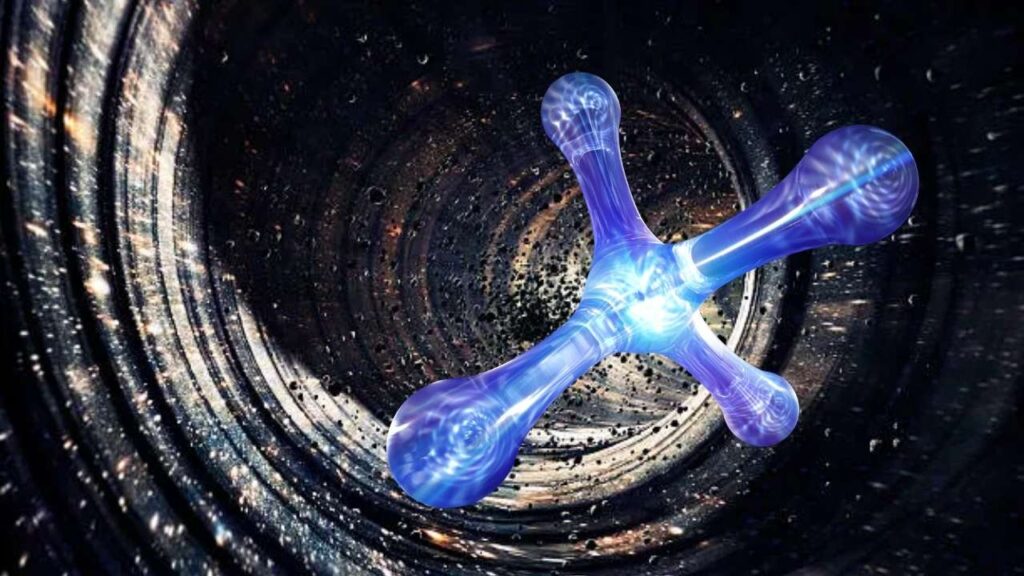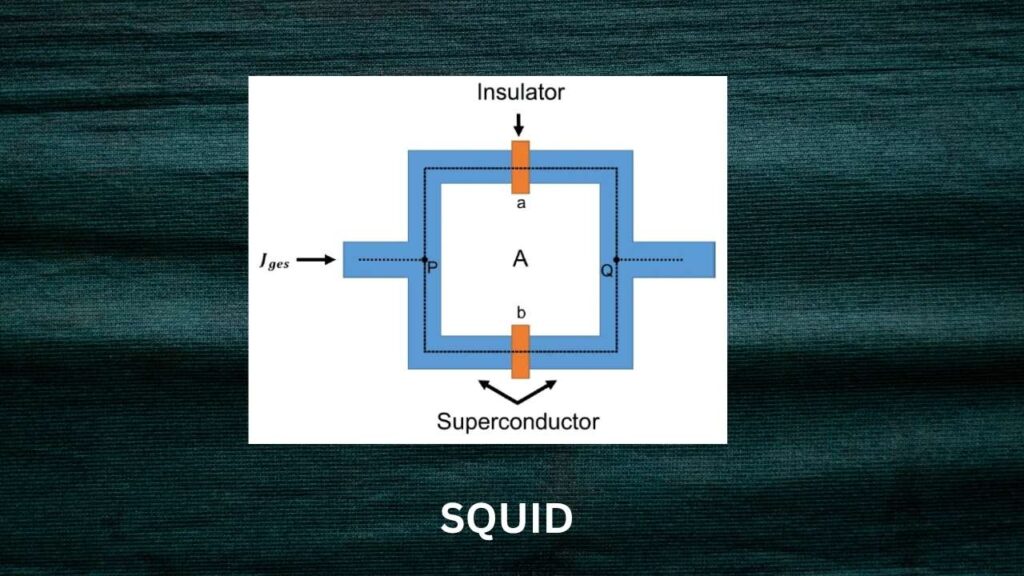Scientists Use a Levitating Magnet to Search for Dark Matter: Scientists at Rice University are now using a levitating magnet inside a superconducting trap to hunt for one of the universe’s biggest mysteries: dark matter. It might sound like science fiction, but this ultra-sensitive quantum experiment could shake up our understanding of the unseen cosmos.

Dark matter is believed to make up about 27% of the universe, while regular matter accounts for only around 5%. The rest is dark energy—another beast altogether. Despite decades of searching, no one’s directly spotted dark matter yet. That’s why this clever “floating magnet” trick is turning heads.
Scientists Use a Levitating Magnet to Search for Dark Matter
| Feature | Details |
|---|---|
| Experiment | Levitating permanent magnet (~<1 mg) in a superconducting Meissner trap |
| Objective | Detect ultralight dark matter (mass range: ~1.10 × 10⁻¹³ eV/c²) |
| Detection Tool | Quantum sensor (SQUID) measuring magnetic flux wobbles |
| Current Result | No direct detection—but new limits: coupling strength 𝐠₍𝐵–𝐿₎ ≲ 2.98 × 10⁻²¹ |
| Upgrades Planned | Heavier magnet, vibration isolation, enhanced SQUID in the new POLONAISE system |
| Published In | Physical Review Letters (peer-reviewed) |
| Institution | Rice University, in collaboration with Leiden University |
| Significance | Opens new quantum sensing pathway, complements existing dark matter searches |
| Official Source | Rice University Official Website |
Using a levitating magnet to search for ultralight dark matter may sound like a crazy idea—but it’s grounded in real quantum physics. The first results from Rice University haven’t uncovered dark matter yet, but they’ve set solid experimental boundaries and built a foundation for what comes next.
The upgraded POLONAISE system is expected to push the limits further and possibly detect dark matter where other experiments can’t. Whether you’re a student curious about the stars or a physicist digging into the unknown, this approach is one of the most exciting frontiers in modern science.
What Exactly Is Dark Matter?
Imagine tossing a pebble into a pond. You see ripples, but not the pebble itself. That’s kind of how we know dark matter exists. We see its gravitational effects—how galaxies rotate, how light bends—but we can’t actually see or touch it. It’s invisible. Yet it holds galaxies together like cosmic glue.

- Dark matter makes up about 27% of all energy in the universe.
- Normal matter (everything you can touch) is just 5%.
- The rest is dark energy, which pushes the universe apart.
The stuff scientists are chasing in this Rice experiment is called ultralight dark matter, and it’s as light as it gets—so light it behaves more like a wave than a particle.
How the Levitating Magnet Trick Works
This is where the science gets wild—but still totally grounded in physics.
1. Build the Superconducting Trap
They create a tiny ring made of superconducting material. When cooled to near absolute zero, it kicks into quantum overdrive. Thanks to the Meissner effect, the ring repels magnetic fields and can make a magnet float without touching anything.
2. Float the Magnet
They levitate a sub-milligram magnet inside the ring. It just hovers in space—no strings, no support. This makes it super sensitive to even the tiniest nudge.
3. Use a SQUID Sensor
A SQUID (Superconducting Quantum Interference Device) sits nearby, monitoring magnetic flux. If the magnet starts vibrating due to some invisible influence—like a dark matter wave—the SQUID picks it up.

4. Watch for Patterns
They record data in frequency space. If dark matter is pushing on the magnet periodically, you’ll see a signal at a specific frequency. In their first test, they checked around 26.7 Hz.
5. Crunch the Numbers
No signal was found. But that’s still progress—it helps narrow down where dark matter isn’t. And they set a new upper limit on how strongly this type of dark matter could interact with matter.
What They Found (So Far)
Here are the results in plain terms:
- Mass range explored: ~1.10360 to 1.10485 × 10⁻¹³ eV/c²
- Sensitivity: They could detect forces as small as 0.2 femtonewtons per square root hertz (0.2 fN/√Hz)
- Main takeaway: No dark matter detected yet, but they ruled out interactions stronger than 2.98 × 10⁻²¹ in that mass range
This is the first data-based test of this exact method. While it’s not the strongest limit in the field yet, it’s a brand-new approach—and there’s lots of room to improve.
POLONAISE: The Next Big Leap
Now comes the upgrade—called POLONAISE, short for:
Probing Oscillations using Levitated Objects for Novel Accelerometry In Searches of Exotic physics
It’s a mouthful, but here’s what it means:
- They’ll use a heavier magnet, possibly hundreds of milligrams, to increase sensitivity.
- Add tunable coils to sweep across different dark matter frequencies.
- Improve vibration control and magnetic shielding to reduce background noise.
- Upgrade the SQUID sensor for even better precision.
These tweaks could make the system sensitive enough to compete with other high-end dark matter experiments—and maybe even beat them in certain mass ranges.
How This Fits into the Bigger Picture
Let’s not forget: Rice isn’t the only player in this game. Other methods also hunt for ultralight dark matter:
- Gravitational-wave detectors like LIGO and Virgo
- Fifth-force experiments like MICROSCOPE
- Axion detectors like ADMX and DM Radio
- Atomic interferometers and laser-cooled atom traps
What makes Rice’s setup unique is that it’s small, cheap, and ultra-sensitive—perfect for probing very low-mass dark matter that heavier setups might miss.
Why It Matters
Even if you’re not a physicist, this work has huge implications.
- Unlocking the universe
Understanding dark matter could reshape everything we know about gravity, galaxy formation, and cosmic history. - Quantum tech spinoffs
The sensors built for this experiment could be used in geology, navigation, medicine, and even earthquake detection. - Job creation in STEM
These experiments need cryogenics experts, engineers, quantum physicists, software devs—you name it.
What’s Next for the Experiment
Rice and Leiden University plan to start testing the upgraded POLONAISE system by late 2025. Early results will focus on:
- Validating the new heavier magnet system
- Fine-tuning frequency sensitivity
- Reducing thermal and seismic noise
They’re also in talks with other labs to collaborate on space-based versions, where microgravity would allow even more sensitive measurements.
Breakthrough Carbon Capture Method Could Make Cement Ingredients Climate-Friendly
Researchers At FAMU–FSU Reveal Universal Law Of Quantum Vortex Dynamics
FAQs About Scientists Use a Levitating Magnet to Search for Dark Matter
What is ultralight dark matter?
Ultralight dark matter refers to hypothetical particles with masses around 10⁻¹³ eV or lower. These particles are so light, they behave more like waves than particles.
Why use a levitating magnet?
It eliminates friction and support noise, making the system ultra-sensitive to tiny vibrations, like those possibly caused by dark matter.
What does a SQUID do?
A SQUID detects tiny changes in magnetic fields. It’s one of the most sensitive instruments ever made for measuring magnetic flux.
Did they find dark matter?
Not yet, but they placed the first experimental constraints using this method—helping guide future experiments.
Who funded the research?
It’s supported by the National Science Foundation (NSF), U.S. Department of Energy (DOE), Netherlands Organisation for Scientific Research (NWO), and Rice University.






